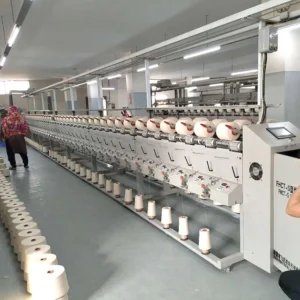The fashion and textile industries are undergoing a green revolution, with natural dyes emerging as a key player in sustainable manufacturing.
Unlike synthetic dyes—which often contain harmful chemicals and contribute to pollution—natural dyes offer an eco-friendly alternative without sacrificing beauty or quality.
This article explores how natural dyes are transforming textile production, answering essential questions about their benefits, applications, and why they matter for both brands and consumers.
What Exactly Are Natural Dyes?
Derived from Plants, Minerals, and Insects
Natural dyes are colorants obtained from a variety of renewable sources, including plants, minerals, and even insects.
These materials have been utilized for centuries, with ancient cultures employing them for textiles and art. In recent years, there has been a resurgence in interest in natural dyes as manufacturers refine their extraction and application processes for modern textile production.
This revival not only honors traditional methods but also adapts them to meet contemporary standards and consumer demands.
Free from Harmful Chemicals
One of the most significant advantages of natural dyes is their composition.
This lack of harmful substances means that individuals wearing garments dyed with natural colors are less likely to experience skin irritations or allergic reactions.
The absence of toxic chemicals in the dyeing process contributes to a healthier working environment for those involved in textile production, promoting overall well-being in the industry.
Biodegradable and Non-Polluting
Natural dyes possess an inherent advantage in terms of environmental impact.
Since they originate from organic sources, they are biodegradable, meaning they can break down naturally without leaving harmful residues in the environment.
This characteristic significantly reduces the risk of water contamination and soil damage that often accompanies synthetic dyeing processes.
When natural dyes are used, the likelihood of polluting waterways is minimized, thereby protecting aquatic ecosystems and ensuring that ecosystems remain balanced and healthy for future generations.
How Do Natural Dyes Support Sustainability?
Reducing Water Pollution
The conventional dyeing process typically generates substantial amounts of toxic wastewater that can harm local waterways and aquatic life.
Their organic nature means that, when disposed of, they are less likely to contaminate water sources.
This reduction in water pollution not only protects the health of aquatic ecosystems but also supports communities that depend on clean water for drinking and agriculture.
Lower Carbon Footprint
Producing natural dyes generally requires less energy compared to their synthetic counterparts.
The processes involved in extracting and applying natural dyes are often less energy-intensive, which translates to a reduced carbon footprint.
This decrease in energy consumption leads to lower greenhouse gas emissions, contributing positively to the fight against climate change.
Supporting Ethical Farming Practices
Many natural dyes are derived from crops that promote biodiversity and sustainable agriculture, creating a positive impact on farming communities.
The cultivation of these crops often encourages diverse ecosystems and reduces reliance on harmful pesticides and fertilizers.
This relationship not only enhances the livelihoods of agricultural workers but also fosters a more sustainable agricultural system that prioritizes environmental health and resilience.
Also Read:
- The Benefits of Using Organic Materials in Textile Production
- How to Reduce Chemical Usage in Textile Manufacturing
Are Natural Dyes as Vibrant and Long-Lasting as Synthetic Ones?
Advances in Color Fixation
Recent advancements in color fixation techniques have significantly improved the performance of natural dyes.
The use of natural mordants, which are substances that help fix dyes to fabrics, enhances the bond between the dye and the textile.
Natural dyes can achieve vibrancy comparable to synthetic dyes, making them a viable option for consumers seeking both beauty and sustainability in their garments.
A Unique, Earthy Aesthetic
While some natural dyes may produce softer tones than their synthetic counterparts, many consumers are drawn to their unique, earthy aesthetic.
The subtle variations and organic beauty of natural dyes create a distinct charm that synthetic dyes often lack.
This quality resonates with individuals who appreciate the authenticity and craftsmanship associated with naturally dyed fabrics.
Improved Wash and Light Fastness
Innovations in dye application methods have led to significant improvements in the wash and light fastness of certain natural dyes.
These advancements allow natural dyes to resist fading and maintain their vibrancy even after repeated washing and exposure to sunlight.
Garments dyed with these enhanced natural dyes become more durable and suitable for everyday wear.
Which Fabrics Work Best with Natural Dyes?
Natural Fibers Like Cotton, Linen, and Silk
Natural fibers, including cotton, linen, and silk, are particularly well-suited for absorbing natural dyes.
These plant-based and protein-based fabrics have a porous structure that allows dyes to penetrate deeply, resulting in rich, long-lasting colors.
The compatibility of natural fibers with natural dyes ensures that the final product not only looks beautiful but also maintains its color over time.
Hemp and Bamboo
Hemp and bamboo are two sustainable fibers that also take well to natural dyes, further enhancing their eco-friendly appeal.
Both materials are known for their durability and low environmental impact, making them ideal choices for consumers interested in sustainable fashion.
The ability of hemp and bamboo to absorb natural dyes effectively allows for vibrant color application while supporting responsible agricultural practices.
Incorporating these fibers into naturally dyed products contributes to a more sustainable textile industry and aligns with growing consumer preferences for environmentally conscious materials.
Challenges with Synthetic Blends
While natural dyes work exceptionally well with natural fibers, challenges arise when applied to synthetic blends.
Fabrics like polyester and other synthetic materials often do not hold natural dyes effectively, limiting their use in fully sustainable fashion.
The chemical composition of synthetic fibers can hinder the dye’s ability to bond, resulting in less vibrant colors and poor color retention.
Also Read:
- Innovative Eco-Dyeing Methods for Sustainable Fashion
- Reducing Water Usage in Textile Dyeing Processes
What Are the Main Challenges of Using Natural Dyes?
Limited Color Consistency
One of the primary challenges associated with natural dyes is the limited color consistency they can exhibit.
Due to variations in raw materials—such as differences in soil quality, climate conditions, and even the time of harvest—natural dyes can vary slightly between batches.
This inconsistency poses difficulties for manufacturers seeking precise color matching for large production runs.
Higher Production Costs
Sourcing and processing natural dyes often comes with higher production costs compared to synthetic alternatives.
The extraction and preparation of natural dyes can be labor-intensive and may require specialized knowledge.
This shift may help make natural dyeing more economically viable for brands in the long run, encouraging wider adoption of sustainable practices in the industry.
Longer Processing Times
The use of natural dyes typically involves longer processing times, which can slow down manufacturing compared to synthetic dyes.
Many natural dyes require multiple steps to achieve the desired color and quality, including preparation, dyeing, and fixation processes.
This complexity can extend production timelines, making it challenging for brands that rely on quick turnaround times.
How Can Brands Successfully Switch to Natural Dyes?
Partnering with Ethical Suppliers
Successful transitions to natural dyes often begin with brands partnering with ethical suppliers.
Sourcing dyes from farms and producers committed to sustainable and fair-trade practices ensures that the materials are not only environmentally friendly but also socially responsible.
Building strong relationships with suppliers can also facilitate better quality control and more consistent dye results, ultimately benefiting the brand’s overall production process.
Educating Consumers on Benefits
Brands looking to switch to natural dyes should focus on educating consumers about the numerous benefits associated with these materials.
Transparent marketing that highlights the environmental advantages, such as reduced water pollution and biodegradability, can help justify any potential price differences compared to synthetic products.
This educational approach not only fosters brand loyalty but also encourages a broader consumer shift toward environmentally responsible choices.
Starting with Small Collections
To facilitate a successful transition to natural dyes, brands can begin by testing natural dyes in small collections or limited product lines.
This strategy allows brands to refine their processes, assess the challenges involved, and gather consumer feedback before committing to a full-scale adoption of natural dyes.
Starting small enables brands to experiment with different dyeing techniques and material combinations, minimizing risks while maximizing learning opportunities.
Will Consumers Pay More for Naturally Dyed Textiles?
Growing Demand for Eco-Friendly Fashion
Recent surveys indicate a notable shift in consumer attitudes toward sustainable clothing, with many shoppers expressing a willingness to invest in eco-friendly options, even if they come at a premium price.
This growing demand reflects an increasing awareness of environmental issues and a desire to support brands that prioritize sustainability.
Perceived Value in Quality and Ethics
Consumers often associate naturally dyed textiles with higher craftsmanship, durability, and ethical production practices.
The perception of quality linked to natural dyes can enhance their appeal, as shoppers recognize the time and effort involved in creating these products.
Furthermore, the ethical implications of using natural dyes resonate with consumers who value environmental responsibility and wish to support sustainable practices.
The Influence of Transparency
Transparency plays a crucial role in shaping consumer trust and loyalty. Brands that openly share their dyeing processes and the origins of their materials tend to build stronger connections with their customers.
When consumers understand the sustainable practices behind naturally dyed textiles, they are more likely to support these options, even at a higher cost.
This transparency fosters a sense of accountability and integrity within the brand, encouraging consumers to make purchasing decisions based on values rather than just price.
What’s the Future of Natural Dyes in Textile Manufacturing?
Innovations in Bioengineered Dyes
The future of natural dyes is being shaped by exciting innovations in bioengineered dyes.
Scientists are currently developing lab-grown natural dyes derived from algae and bacteria, presenting new avenues for sustainable dyeing solutions.
These bioengineered dyes not only promise to reduce environmental impact but also offer the potential for vibrant and consistent color outputs.
Scaling Up Production Efficiently
As technology continues to advance, the production of natural dyes is expected to become faster and more cost-effective.
Improvements in extraction methods, processing techniques, and dyeing machinery will streamline production, allowing brands to meet consumer demand without compromising on sustainability.
This scaling up will enable natural dyes to compete more effectively with synthetic alternatives in the mass market, making them a viable option for a broader range of consumers and applications, ultimately leading to increased adoption across the textile industry.
Regulatory Push for Greener Practices
Governments and industry standards are increasingly favoring eco-friendly practices, which is likely to accelerate the adoption of natural dyes in textile manufacturing.
Regulatory frameworks that encourage sustainable practices and provide incentives for using environmentally friendly materials will push more brands to explore natural dye options.
This regulatory push not only benefits the environment but also aligns with the growing consumer demand for sustainable products.
Conclusion
Natural dyes represent more than just a return to traditional methods; they signify a critical step toward a cleaner and more responsible textile industry.
Despite challenges such as cost and color consistency, advancements in technology and a growing consumer demand for sustainable options are making natural dyes a practical choice for fashion brands.
Embracing these eco-friendly alternatives allows companies to reduce their environmental impact while offering customers beautiful, ethically crafted products. The future of textiles is vibrant and sustainable—naturally.












